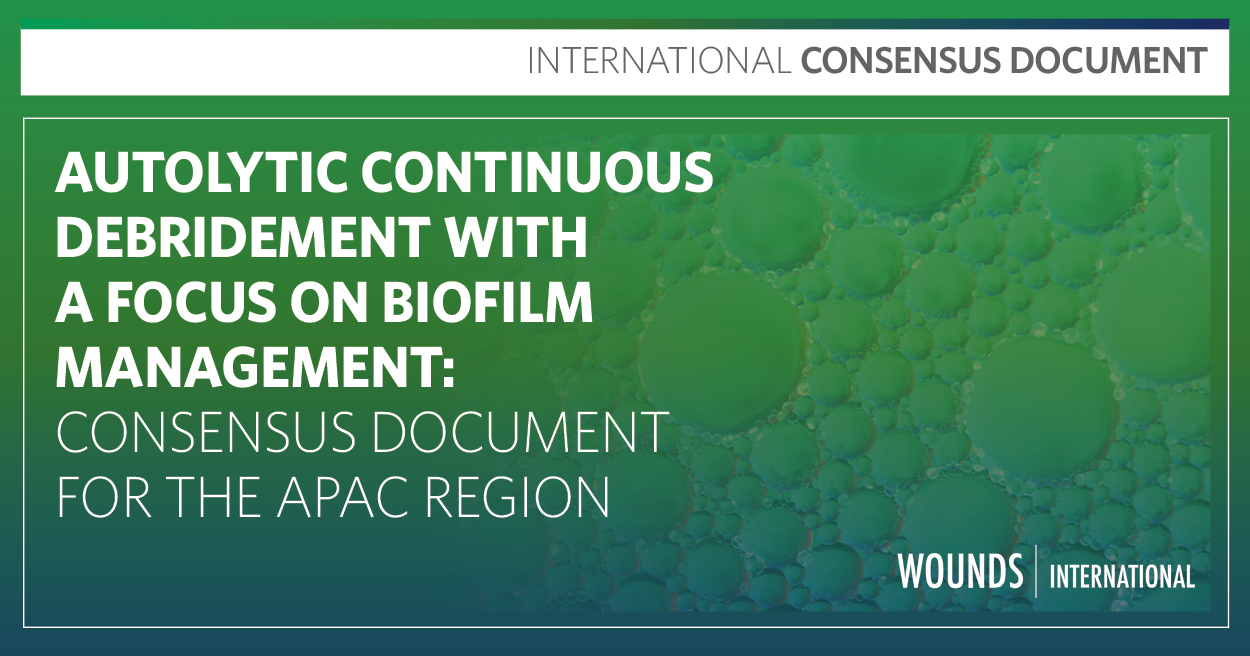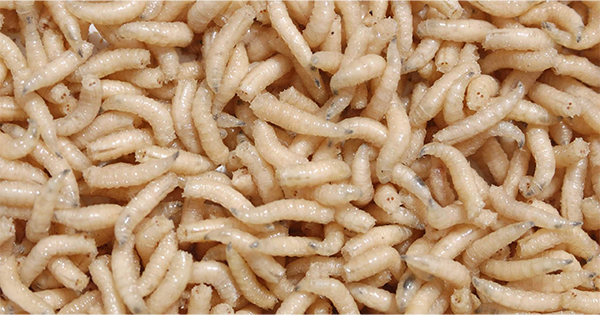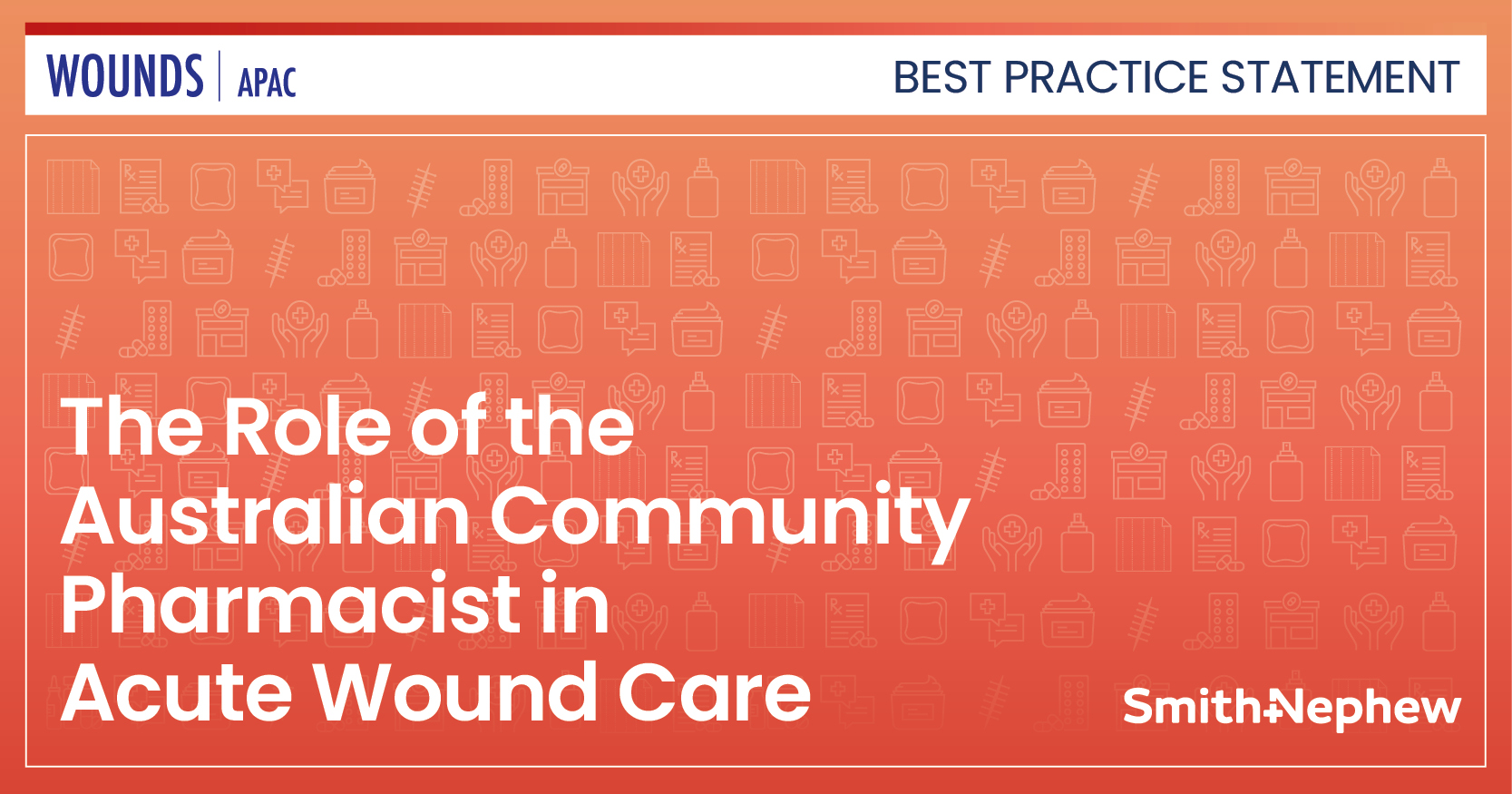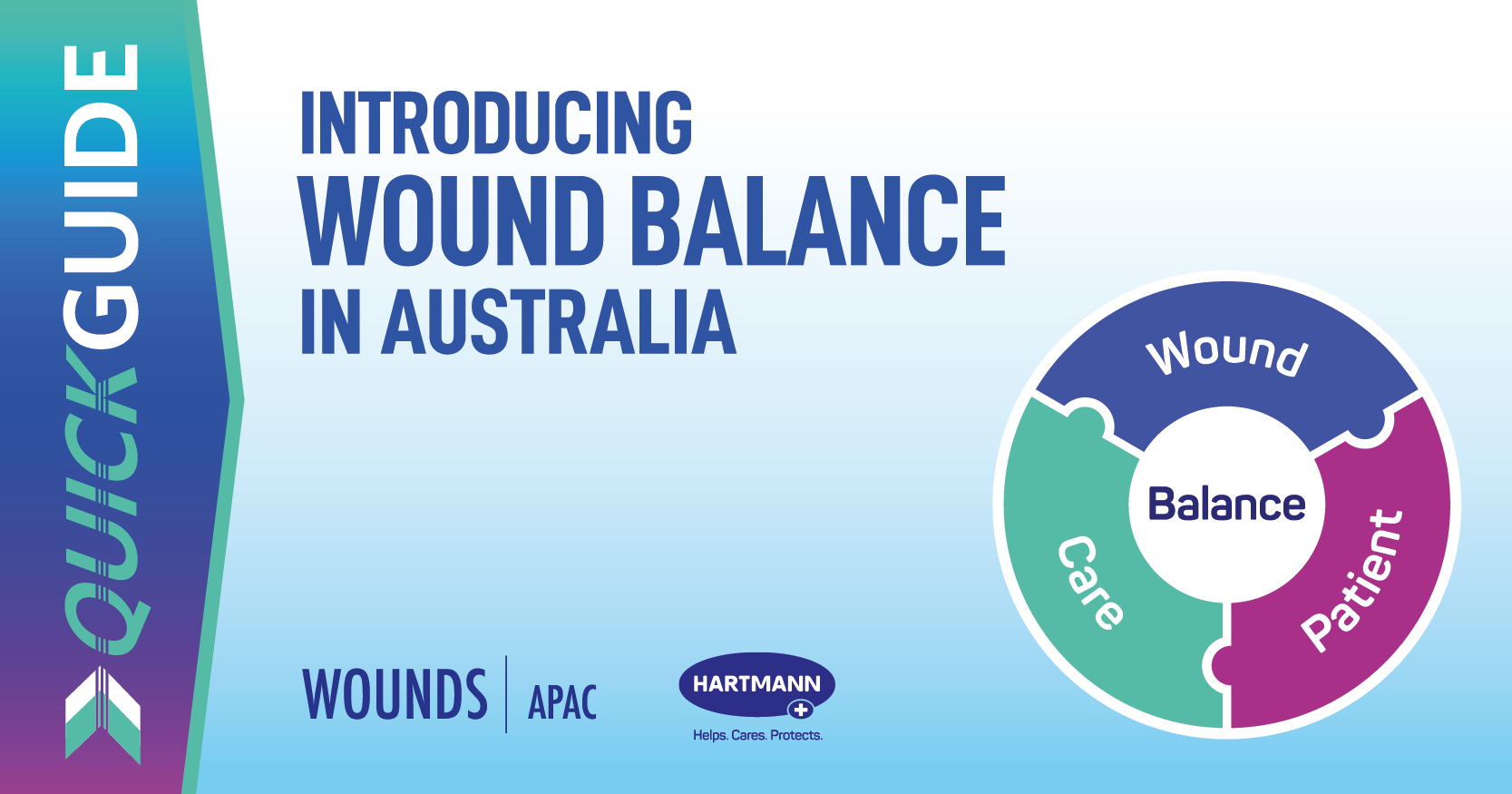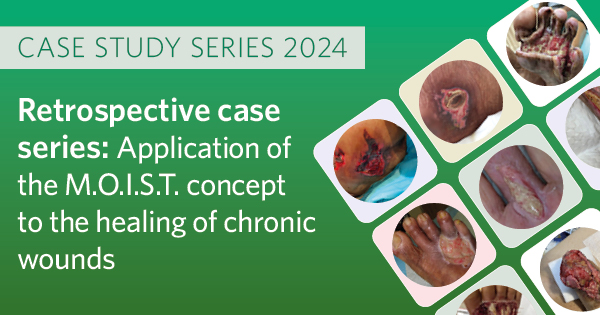ReferencesAnekar AA, Hendrix JM, Cascella M (2023) WHO Analgesic Ladder. In: StatPearls [Internet]. Treasure Island (FL): StatPearls Publishing. Available at: https://www.ncbi.nlm.nih.gov/books/NBK554435/ (accessed 24.07.24)
Anghel EL, DeFazio MV, Barker JC et al (2016) Current concepts in debridement: Science and strategies. Plast Reconstr Surg 138(3): 82–93
Armstrong DG, Boulton AJM, Bus SA (2017) Diabetic foot ulcers and their recurrence. N Engl J Med 376(24): 2367–75
Armstrong DG, Swerdlow MA, Armstrong AA et al (2020) Five year mortality and direct costs of care for people with diabetic foot complications are comparable to cancer. J Foot Ankle Res 13(16): 2–4
Atkin L, Bucko Z, Conde Montero E et al (2019) Implementing TIMERS: the race against hard-to-heal wounds. J Wound Care 28(3): 1-49
Barker JC, Khansa I, Gordillo GM (2017) A formidable foe is sabotaging your results: What you should know about biofilms and wound healing. Plast Reconstr Surg 139(5): 1184-94
Barrigah-Benissan K, Ory J, Sotto A et al (2022) Antiseptic agents for chronic wounds: A systematic review. Antibiotics (Basel) 11(3): 350
Bernard FX, Barrault C, Juchaux F et al (2005) Stimulation of the proliferation of human dermal fibroblasts in vitro by a lipidocolloid dressing. J Wound Care 14(5): 215-20
Bjarnsholt T, Eberlein T, Malone M, Schultz G (2017) Management of biofilm Made Easy. Wounds International Available at: www.woundsinternational.com
British Association of Dermatologists (2021) Describing erythema in skin of colour. Available at: https://www.bad.org.uk/healthcareprofessionals/ inclusivity-and-representation/erythema-in-skin-of-colour (accessed 22.07.24)
Brown A (2018) When is wound cleansing necessary and what solution. Potable tap water is should be used? Nursing Times 114(9): 42–5
Choo J, Nixon J, Nelson A, McGinnis E (2019) Autolytic debridement for pressure ulcers. Cochrane Database Syst Rev 17(6)
Dalac S, Sigal L, Addala A et al (2016) Clinical evaluation of a dressing with poly absorbent fibres and a silver matrix for managing chronic wounds at risk of infection: a non comparative trial. J Wound Care 25(9): 531–8
Desroche N, Dropet C, Janod P, Guzzo J (2016) Antibacterial properties and reduction of MRSA biofilm with a dressing combining polyabsorbent fibres and a silver matrix. J Wound Care 25(10): 577–84
Desroche N, Dropet C (2017) Biofilm and association of poly-absorbent fibres and silver ions. Escarre 74: 9–13
Dhoonmoon L, Nair HKR, Abbas Z et al (2023) Wound care and skin tone: Signs, symptoms and terminology for all skin tones. Wounds International Available at: www.woundsinternational.com
Dissemond J, Steinmann J, Münter K-C (2020) Risk and clinical impact of bacterial resistance/ susceptibility to silver-based wound dressings: a systematic review. J Wound Care 29(4):221–34
European Wound Management Association (2004) Position Document: Wound bed preparation in practice. Wounds International Available at: www.woundsinternational.com
European Wound Management Association (2022) Antimicrobials and Non-healing Wounds: An Update. Available at: https://tinyurl.com/5n8uew6s (accessed 14.06.24)
Fletcher J, Edwards-Jones V, Fumarola S (2020) Best Practice Statement: Antimicrobial stewardship strategies for wound management. Wounds UK Available at: www.wounds-uk.com
Fletcher J, Atkin L, Edwards-Jones V et al (2021) Best Practice Statement: Use of silver dressings in wound care. Wounds UK Available at: www.wounds-uk.com
Foot In Diabetes UK (2014) Principles of debridement the diabetic foot: Developing a scope of practice for podiatrists in the UK. Available at: https://wounds-uk.com/consensus-documents/principles-of-debridement-the-diabetic-foot/ (accessed 09.09.24)
Gray D, Acton C, Chadwick P et al (2011) Consensus guidance for the use of debridement techniques in the UK. Wounds UK 7(1): 77-84
Guiloff RJ, Angus-Leppan H (2016) WHO analgesic ladder and chronic pain: the need to search for treatable causes. BMJ 4: 352
Haesler E, Swanson T, Ousey K (2022) Establishing a consensus on wound infection definitions. J Wound Care 31(12): 48-59
Harriott MM, Bhindi N, Kassis S et al (2019) Comparative antimicrobial activity of commercial wound care solutions on bacterial and fungal biofilms. Ann Plast Surg 83: 404–10
Haubner F, Ohmann E, Pohl F et al (2012) Wound healing after radiation therapy: review of the literature. Radiat Oncol 24(7): 162
Haycocks S, Chadwick P (2012) Debridement of diabetic foot wounds. Nursing Standard 26: 51–8
Hirschfeld J (2014) Dynamic interactions of neutrophils and biofilms. J Oral Microbiol 6: 26102
Holloway S, Ahmajärvi K, Frescos N (2024) Management of wound-related pain. J Wound Management 25(1) 1-84
Holmes C, Jarocki C, Torrence G, Priesand S (2019) Wound debridement for diabetic foot ulcers: a clinical practice review. The Diabetic Foot Journal 22(2): 60–3
International Diabetes Federation (2021) IDF Diabetes Atlas. Available at: https://diabetesatlas.org (accessed 16.08.2022)
International Wound Infection Institute (2016) Wound infection in clinical practice. Wounds International Available at: www.woundsinternational.com
International Wound Infection Institute (2022) Wound infection in clinical practice: Principles of best practice. Wounds International Available at: www.woundsinternational.com
International Wound Infection Institute (2023) Slough: composition, analysis and effect on healing. Wounds International Available at: www.woundsinternational.com
Jones ML (2018) Wound healing Series 2.5. Wound debridement, part 1. British Journal of Healthcare Assistants 12(2): 78–80
Karlsson T, Musse F, Magnusson KE, Vikström E (2012) N-Acylhomoserine lactones are potent neutrophil chemoattractants that act via calcium mobilization and actin remodeling. J Leukoc Biol 91(1): 15–26
Kiamco MM, Zmuda HM, Mohamed A et al (2019 Hypochlorous-Acid-Generating Electrochemical Scaffold for Treatment of Wound Biofilms. Sci Rep 9(1): 2683
Kool B, Ipil M, McCool J (2019) Diabetes Mellitus-related Foot Surgeries in the Republic of the Marshall Islands in Micronesia. Hawaii J Med Public Health 78(1): 13–8
Labib A, Winters R (2023) Complex Wound Management. Available from: https://www.ncbi.nlm.nih.gov/books/NBK576385/ (accessed 04.06.24)
Lazareth I, Meaume S, Sigal-Grinberg ML et al (2008) The Role of a Silver Releasing Lipido-colloid Contact Layer in Venous Leg Ulcers Presenting Inflammatory Signs Suggesting Heavy Bacterial Colonization: Results of a Randomized Controlled Study. Wounds 20(6): 158-66
Leaper DJ, Schultz G, Carville K et al (2010) Extending the TIME concept: what have we learned in the past 10 years? Int Wound J 9(2): 1-19
Malone M, Bjarnsholt T, McBain AJ et al (2017) The prevalence of biofilms in chronic wounds: a systematic review and meta-analysis of published data. J Wound Care 26(1): 20–5
Manna B, Nahirniak P, Morrison CA (2023) Wound debridement. NIH National Library of Medicine. Available at: https://www.ncbi.nlm.nih.gov/books/NBK507882/ (accessed 04.06.24)
Mayer D, Tettelbach WH, Ciprandi G et al (2024) Best practice for wound debridement. Journal of Wound Care 33(6)
McGrath A, Newton H, Trudgian J, Greenwood M (2014) TLC dressings Made Easy. Wounds UK Available at: www.wounds-uk.com
Meaume S, Senet P, Dumas R et al (2002) Urgotul®: a novel non-adherent lipidocolloid dressing. Br J Nurs 11(3): 42–50
Meaume S, Téot L, Lazareth I, Martini J, Bohbot S (2004) The importance of pain reduction through dressing selection in routine wound management: the MAPP study. J Wound Care 13(10): 409–13
Meaume S, Perez J, Rethore V et al (2012) Management of chronic wounds with an innovative absorbent wound dressing. J Wound Care 21(7): 315–22
Meaume S, Dissemond J, Addala A et al (2014) Evaluation of two fibrous wound dressings for the management of leg ulcers: results of a European randomised controlled trial (EARTH RCT). J Wound Care 23(3): 105–16
Nair HKR, Choudhury S, Ramachandram K et al (2019) Investigation and review on the efficacy of super-oxidized solution (HYDROCYN aqua®) against biofilm.Wounds International 10(4): 62-6
Nair HKR, Chew KY, Jun Y et al (2022) Diabetic foot ulcer care in the Asia-Pacific region. Wounds International Available at: www.woundsinternational.com
Nair HKR, Mrozikiewicz-Rakowska B, Sanches Pinto D et al (2023) Use of wound antiseptics in practice. Wounds International Available at: www.woundsinternational.com
Olszowski S, Mak P, Olszowska E, Marcinkiewicz J (2003) Collagen type II modification by hypochlorite. Acta Biochim Pol 50(2): 471-9
Ousey K, Ovens L (2023) Comparing methods of debridement for removing biofilm in hard-to-heal wounds. J Wound Care 32(3b): 4–10
Pattison DI, Hawkins CL, Davies MJ (2003) Hypochlorous acid-mediated oxidation of lipid components and antioxidants present in low-density lipoproteins: absolute rate constants, product analysis, and computational modeling. Chem Res Toxicol 16(4): 439-49
Percival SL, Suleman L (2015) Slough and biofilm: removal of barriers to wound healing by desloughing. J Wound Care 24(11): 498-510
Percival S, Atkin L (2024) Managing wounds at risk of infection in difficult-to-dress areas. Wounds UK 20(1): 42–6
Price PE, Fagervik-Morton H, Mudge EJ et al (2008) Dressing-related pain in patients with chronic wounds: An international patient perspective. Int Wound J 5(2): 159–71
Roy S, Elgharably H, Sinha M et al (2014) Mixed-species biofilm compromises wound healing by disrupting epidermal barrier function. J Pathol 233(4): 331–43
Sakarya S, Gunay N, Karakulak M et al (2014) Hypochlorous acid: an ideal wound care agent with powerful microbicidal, antibiofilm, and wound healing potency. Wounds 26(12): 342–50
Sandy-Hodgetts K, Ademuyiwa A, Awang P et al (2022) Incision care and dressing selection in surgical incision wounds: Findings from an international meeting of surgeons and wound care specialists from Africa. Wounds International Available at: www.woundsinternational.com
Schofield A, Ousey K (2021) Wound bed preparation Made Easy. Wounds UK Available at: www.wounds-uk.com
Schultz GS, Sibbald RD, Falanga V et al (2003) Wound bed preparation: a systematic approach to wound management. Wound Repair Regen 11: S1-28
Schultz GS, Bjarnsholt T, James GA et al (2017) Global Wound Biofilm Expert Panel. Consensus guidelines for the identification and treatment of biofilms in chronic nonhealing wounds. Wound Repair Regen 25(5): 744-57
Sen CK, Roy S, Mathew-Steiner SS, Gordillo GM (2021) Biofilm Management in Wound Care. Plast Reconstr Surg 148(2): 275–88
Sibbald RG, Elliott JA, Persaud-Jaimangal R et al (2021) Wound Bed Preparation. Adv Skin Wound Care 34(4): 183-95
Thewijitcharoen Y, Sripatpong J, Krittiyawong S et al (2020) Changing the patterns of hospitalized diabetic foot ulcer (DFU) over a 5-year period in a multi-disciplinary setting in Thailand. BMC Endocrine Disorders 20: 89
Thomas DC, Tsu CL, Nain RA et al (2021) The role of debridement in wound bed preparation in chronic wound: A narrative review. Ann Med Surg 4(71): 102876
Ventafridda V, Saita L, Ripamonti C, De Conno F (1985) WHO guidelines for the use of analgesics in cancer pain. Int J Tissue React 7(1):93-6
Vowden K, Vowden P (2011) Debridement Made Easy. Wounds UK Available at: www.wounds-uk.com
Yang J, Bauer BA, Wahner-Roedler DL et al (2020) The Modified WHO Analgesic Ladder: Is It Appropriate for Chronic Non-Cancer Pain? J Pain Res 17(13): 411-17
Yin W, Wang Y, Liu L, He J (2019) Biofilms: The Microbial “Protective Clothing” in Extreme Environments. Int J Mol Sci 20(14): 3423
Young T, Chadwick P, Clark M et al (2013) Effective debridement in a changing NHS: a UK consensus. Wounds UK Available at: www.wounds-uk.com
White R, Cowan Tand Glover D (2015) Supporting evidence-based practice: a clinical review of TLC healing matrix. MA Healthcare Ltd
Win Tin ST, Kenilorea G, Gadabu E et al (2014) The prevalence of diabetes complications and associated risk factors in Pacific Islands countries. Diabetes Res Clin Pract 103(1): 114-8
Wolcott RD, Rhoads DD (2008) A study of biofilm-based wound management in subjects with critical limb ischaemia. J Wound Care 17(4): 145-8
Wolcott RD, Rumbaugh KP, James G et al (2010) Biofilm maturity studies indicate sharp debridement opens a time- dependent therapeutic window. J Wound Care 19: 320–8
Wolcott RD, Fletcher J (2014) The role of wound cleansing in the management of wounds. Wounds International 1(1): 25–31
World Health Organization (2010) Policies and incentives for promoting innovation in antibiotic research. Available from: https://apps. who.int/iris/handle/10665/326376 (accessed 17.05.24)
World Health Organization (2023) Traditional medicine has a long history of contributing to conventional medicine and continues to hold promise. Available at: https://www.who.int (accessed 17.05.24)
World Union of Wound Healing Societies (2016) Position document: Management of biofilm. Wounds International Available at: www.woundsinternational.com

